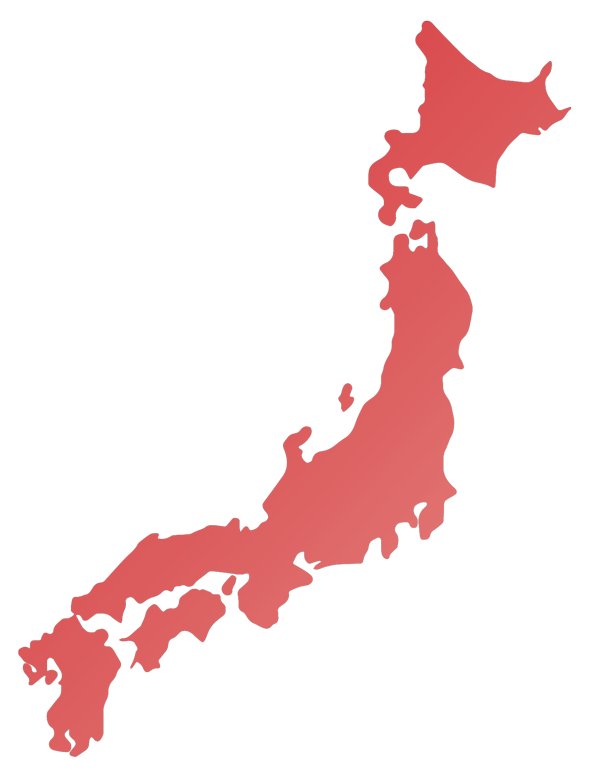
Japan Rail Pass FAQ’s! Below are the most common questions we get asked about Japan Rail Passes. Click on the question and the answer will appear. Once you have all the information you need, secure your Japan Rail Pass today!
When you order your Japan Rail Pass what you’ll receive an Exchange Coupon. This is a physical voucher you take with you to Japan where you must swap it for the actual Japan Rail Pass at one of many designated exchange offices. As it’s a physical voucher, it can’t be emailed to you.
Express post mail :
This option is shipped via Australia Express Post. Please allow up to 5 business days for delivery. Free of charge with online JR Pass
Toll Courier:
A courier is ideal if you want to be absolutely sure that your JR Pass will arrive on time. It costs $20.00 and should arrive by the next business day (only in Australia). Courier requires a signature upon delivery. Please provide an address where you will be during normal office hours. If unable to sign for a delivery, please select a Toll Express Mail Option or pick up collection.
You can only reserve seats once you have arrived in Japan (excluding JR East Pass) and swapped your Exchange Order for your Japan Rail Pass. People tend to choose to reserve seats at the same time as turning their Exchange Order into their Japan Rail Pass.
Seat reservations can be made even just a few minutes before a train departs. However, at certain times of the year when there are national holidays being observed, such as the New Year, Obon, or Golden Week, it is advised that you reserve a seat at least 4 days before your intended travel date.
Japan Rail Pass holders can reserve seats on the bullet train for free (*except Nozomi & Mizuho – additional fares will apply for these 2 trains). Simply look for a ‘Midori-no-madoguchi’ ticket office, seat reservation machine or a JR-affiliated travel centre to make a reservation.
At the Midori no Mado Guchi, present your Japan Rail Pass and inform them which train you want to get a reservation on and whether you wish to be in a non-smoking carriage. They will then provide you with a ticket that indicates your train name and number, carriage number, row number, seat number, departure time, and arrival time.
Alternatively, if you reserve seats using one of the seat reservation machines located at JR stations, then you don’t need to line up at the ‘Midori-no-madoguchi’ ticket office. Please note though that some JR stations do not have a reserved seat ticket machines so you may need to use the ticket office instead.
Instructions:
1. Scan the QR code on your Japan Rail Pass with the reader on the reserved seat ticket machine (or input the reservation number written on your pass). Also input your passport number.
2. Input the travel section, date and time and select the train.
3. Check your inputs are correct then issue the ticket.
Yes, the Japan Rail Pass allows you to ride on all Japan Railway (JR) Group Shinkansen bullet trains for free, except the Nozomi & Mizuyo bullet trains – these two trains will incur an additional special fare supplement charge (purchase in Japan).
Supplement Sector Fare Price for NOZOMI & MIZUHO Bullet Trains for JAPAN RAIL PASS HOLDERS:
*Prices are a guide only. Subject to change.
When using the Japan Rail Pass it won’t cost you any extra money to book tickets in either reserved or non-reserved seating areas on bullet trains except NOZOMI & MIZUHO trains (see below). You can also choose between smoking and non-smoking carriages.
Japan Rail Pass holders are able to purchase special sector fare/s supplements to travel on the Nozomi and Mizuho trains, allowing you to move more quickly between stops on your itinerary. Nozomi trains are the fastest express service on the Tokaido Shinkansen line (Tokyo-Shin Osaka) and the Sanyo Shinkansen line (Shin Osaka-Hakata). Mizuho trains, on the other hand, service both the Sanyo Shinkansen line and the Kyushu Shinkansen.
These sector fares can be purchased at any JR ticket offices (Midori-no-madoguchi), reserved-seat ticket machines, Travel Service Centres, and JR-associated travel agencies in Japan nationwide.
Supplement Sector Fare Prices: *Prices are a guide only
Use of NOZOMI/MIZUHO trains | JAPAN RAIL PASS
There is no one right Japan Rail Pass for everyone. Figuring out which JR Pass is right for you depends on a few key things. Where exactly do you want to go, for how long will you need the pass for and whether you want an ordinary (economy) or green (first class) pass. Having said that, a 21-day Japan Rail Pass will have you covered regardless of your itinerary but there can be cheaper options if you’re willing to buy combinations of smaller passes – although this takes a lot more time and planning to get right. Ask one of our JTB consultants!
In simple terms the Ordinary Japan Rail Pass is Economy class and the Green Japan Rail Pass is First class (in Japan Green means First class). Ordinary class travel offers plenty of leg room and comfort. The Green pass offers even more. The Ordinary class cars tend to get more crowded during peak times on popular routes compared to the Green Class cars.
This is the most common question we get and it will totally depend on your itinerary and length of stay! The 7, 14, 21-day Japan Rail Passes can be of great value and even provide a richer travel experience by traveling further afield.
A perhaps underappreciated application of the rail pass is using it for multiple long-distance day trips, rather than for a continuous circuit with overnight stops, like the golden route through Kyoto, Osaka, Nagoya, Kobe and Hiroshima, before looping back to Tokyo.
A savvy move involves staying at one of the convenient and well-priced station-side hotels in smaller bullet-train stops for the duration of the rail pass and then using it as a base for day trips. Simply catch an early train to one’s day-trip destination and the last train back – no luggage or crowded check-ins to fuss with each day.
From centrally located Nagoya, for example, with very walkable station-adjacent hotels providing lobby-to-platform access in five minutes flat, there is easy shinkansen access to the major highlights of Osaka (54 minutes), Kyoto (34 minutes), Kobe (97 minutes), Hiroshima (2 hours 48 minutes) and Tokyo (1 hour 41 minutes).
Possible to use the JR Pass on Nozomi and Mizuho trains. This allows JR Pass holders to more quickly move between stops on their travel itinerary. Nozomi trains are the fastest express service on the Tokaidō Shinkansen line (Tokyo-Shin Osaka) and the Sanyō Shinkansen line (Shin Osaka-Hakata). Mizuho trains, on the other hand, service both the Sanyō Shinkansen line and the Kyūshū Shinkansen.
However, pass holders will have to pay a supplement per journey by purchasing a special ticket to travel on these trains. Additionally, these prices will include discounts at several attractions in Japan.
Supplement Sector Fare Prices for NOZOMI & MIZUHO: *Prices are a guide only
For information on the Japanese transport network, see the Hyperdia website – https://www.hyperdia.com/
The Japan Rail Pass system works very well. Having said that, please keep in mind the following points. When you purchase your Japan Rail Pass Exchange Order in Australia please remember that as it’s a physical voucher you need to allow enough time for delivery within Australia.
You need to exchange your Exchange Order for a Japan Rail Pass within three months of the date of issue. ie You cannot purchase it more than 3 months in advance of the date you plan to use it.
You can only exchange your Exchange Order for your Pass up to one month prior to the date you intend to start it. You must nominate a start date at the time of exchange.
Be sure to take your actual passport with you when you go to exchange your Exchange Order for your Pass. Copies of your passport are not accepted. Also ensure that all of the information on your Japan Rail Pass Exchange Order matches the information in your passport.
(1) If you are a tourist visiting Japan from abroad for sightseeing:
You are a foreign tourist visiting Japan from abroad for sight-seeing, under the entry status of ‘temporary visitor’. ‘Temporary visitor’ entry status allows a stay in Japan of up to 90 days for sight-seeing, etc. When you enter Japan, entry personnel will stamp your passport as a temporary visitor.
*Visitors who enter Japan under any other visa statuses are not eligible.
*If you use an automated gate, no stamp will be applied to your passport. Either use a manned automated gate or ask a clerk to apply the stamp to your passport.
(2) Japanese people living abroad who meet the following conditions:
People who have both their valid Japanese passport and written proof obtained from the embassy or legation of Japan in the foreign country where they live, that they have been living in that country for 10 or more consecutive years (在留届の写し). (A child also holding a Japanese passport, will also need to be eligible and provide the same documents).
You must confirm that the issued date for both your “Overseas Residential Registration” and your “Certificate of Overseas Residence” is prior to the purchase date of your Exchange Order (and within the last 6 months). You must present your documents when exchanging it for your JR Pass in Japan.
For individuals who possess passports issued by both Japan and another country. In accordance with the Japanese Immigration Law, please present your Japanese passport to immigration when entering the country. In this case, your Japanese passport and “documentation verifying your stay in another country for 10 or more consecutive years, such as a certificate issued by a government office overseas” will be required (在留届の写し).
As a general rule, Exchange Orders cannot be purchased and Japan Rail Pass cannot be exchanged for young children who have spent less than 10 years living in another country. (There are however some exceptions).
There are several types of JR passes that you can get. Determining which pass you should get depends entirely on your itinerary. Here’s what you need to consider:
When most people talk about the JR Pass they’re referring to the nation-wide pass which covers all of Japan. You can get it for 7, 14 or 21 days (must be used consecutively) and in green or ordinary class (green is more expensive and comfortable, ordinary is cheaper and less comfortable).
There’s also several other regional passes and we list them all on our main JR Pass pages of our webiste. Each pass also has its own page to give you more information on how much they cost, where you can go with them and the different ways they can be used.
No. When you purchase a JR Pass you will receive a physical voucher – Exchange Coupon – that you must take with you to Japan and swap for the actual pass. (Except JR East Pass) For this reason it can be delivered to any postal address in Australia (deliveries cannot be delivered to a PO box, parcel collect / parcel locker address or overseas).
Yes, you can ride all JR trains using your Japan Rail Pass. The pass is valid on all Japan Railway (JR) Group Shinkansen bullet trains (Nozomi & Mizuyo trains will incur additional special fare charges *see below), limited express trains, express trains and local trains. In addition to the Bus Rapid Transit system. However, in the cities there are also subway and private railways operating. Your Japan Rail Pass does not cover these trains.
Some examples of metro (subway) trains you can use are:
TOKYO
OSAKA
JR Osaka Loop Line
NAGOYA
It is important to note that in cities there can be several different private companies running different subway and private lines alongside the government run lines. Remember to look for the JR sign when using your Japan Rail Pass.
Supplement Sector Fare Prices for NOZOMI & MIZUHO: *Prices are a guide only
Yes, you’re Japan Rail Pass can be used to board some busses. With a Japan Rail Pass you can catch all busses run by Japan Rail (except Highway busses & some local commuter bus) although it should be noted that Japan Rail doesn’t really have a large bus network. Some of the busses you can use are:
Your Japan Rail Pass will let you use ferries operated by Japan Rail network. The most popular is the Miyajima to Miyajimaguchi ferry.
Children under 6 are not required to have a Japan Rail Pass. They can travel free on the trains, but are not entitled to have a seat (that is, they may have sit on a parent’s lap if the train is fully booked). So they can use a seat if it’s unoccupied but they must vacate it if the seat is booked.
This is limited to one child under 6 per parent. If there is more than one child under 6 per parent then a pass is required. If the child is over 6 and 11 years old or under on the date the Exchange Order was issued then a Child Rail Pass is required (which is cheaper than an adult pass).
If you require a seat for a child under 6 we recommend you purchase child Japan Rail Pass. Please contact us to discuss this option.
There are several types of bullet trains but the best known and most common ones are:
The main difference between them is how many stops they make. Nozomi makes the fewest stops, Hikari has more stops and Kodama stops at all stations. The JR Pass lets you use all these bullet trains. Nozomi & Mizuho trains will require a special supplement ticket fare on top of your JR pass that can be purchased in Japan.
Supplement Sector Fare Prices for NOZOMI & MIZUHO: *Prices are a guide only
JTB has been operating in Australia for over 50 years and in Japan for over 100 years. We’re the world’s oldest Japan Rail Pass provider and we have several offices in Australia with over 70 offices in Japan as well. We’re a popular and a very safe company with longstanding ties to Japan Rail and the Japanese tourism industry. We offer flexible delivery arrangements (including pickup), great prices and we have knowledgeable and experienced staff to assist your needs.
No, however the prices for the Japan Rail Pass do vary depending on exchange rates. The prices are set in Yen by Japan Rail and then we convert them into Australian dollars. JTB monitors the exchange rates regularly to ensure you will buy your pass at the best possible price.
The Japan Rail Pass Exchange Order is valid for three months from the date of issue. This means you have three months within which to exchange it for the actual Japan Rail Pass. You can get Japan Rail Passes that cover a fixed period of time (7, 14, 21 consecutive day passes). When you swap your Exchange Order for the pass itself at a JR exchange office in Japan you will need to nominate that date that you want to be “Day 1” of your pass. You’ll be able to book seats on trains departing any time from 12:01AM on Day 1 to 11:59PM on Day 7, 14, or 21 (depending on the pass you got).
There’s no maximum number of Japan Rail Passes you can get. So long as you fulfill all the requirements and obligations of each pass then you can get as many as you wish.
No, the Japan Rail Pass cover basic fares for either Ordinary or Green classes. There’s nothing stopping you from sleeping in your seat but the system isn’t designed to accommodate or encourage passengers to use the train as overnight accommodation.
There are many English signs at most stations and these days many automated announcements are in both English and Japanese. Although many JR stations can be very large and difficult to navigate you’ll find that the Japanese people are more than willing to try and help you.
No, you won’t. Many people have seen YouTube videos where this happens but those aren’t Japan Rail trains. This happens on busy subway lines in Tokyo, Osaka and other big Japanese cities. You will experience this if traveling by subway in Tokyo during rush hour. Also please note that during crowded periods you cannot be guaranteed a seat on a specific train.
The 7 Japan Rail Pass doesn’t depend on the time you exchange or use the pass but on the calendar day. For example, if I swap my Exchange Order for the Japan Rail Pass on the 1st of January and I nominate the 4th of January as the day it becomes active this means I can now book tickets for any JR service departing from 12:01AM on the 4th of January to 11:59 PM on the 10th of January. The 4th of January is considered “Day 1”, the 5th is “Day 2”, …, the 10th is “Day 7”. If you swap your Exchange Order for your Japan Rail Pass on the 4th of January and you want to begin using it on the same day then you can use it from whenever you exchange it up until 11:59PM on the 10th of January. So you see, it doesn’t depend on the time of day of the exchange or activation but in the calendar day only. In the example above I could book a train from Hiroshima to Tokyo if it departs at 11:59PM on the 7th of January even though most of the travel time and the arrival time will be on the 11th of January. However I couldn’t book a train from Yokohama to Tokyo if it departs at 00:01 on 8th of January as that would be outside the window (even though you’d be off the train sooner than you would if you departed from Yokohama). The key is the departure date. It’s the same for 14 and 21 day Japan Rail Passes as well.
Go To Japan: Get your ‘Temporary Visitor’ visa stamp in your passport at immigration at the airport in Japan. If you use an automated gate, no stamp will be applied to your passport. Either use a manned automated gate or ask a clerk to apply the stamp to your passport.
Swap Your Exchange Coupon for Your Actual Rail Pass: You will need to swap your exchange coupon for your actual JR pass in Japan at an exchange office. You can then start using your JR pass the day you exchange it or select a date for the first day of use.
If you find a mistake on your Exchange Order (for example, if your surname is spelt incorrectly or if your date of birth is wrong, etc) then you should notify us immediately so that we can correct it before you leave Australia. There have been cases in the past where Japan Rail has refused to accept an Exchange Order as the details on the voucher and the details in the passport did not match.
For this reason we recommend buying from a local agent (like JTB) as we have offices in Sydney, Melbourne, Cairns and the Gold Coast and we can quickly help you – you won’t be able to do this with online-only services. We also recommend booking your pass as far in advance as possible (but no more than three months before you plan on making the exchange in Japan). Please note that when you change the details on a Japan Rail Pass Exchange Order it means that the note has to be reissued. This carries a fee of AUD$60 PLUS postage fee. It’s certainly best to avoid this wherever possible so please take extra care to make sure any details you supply are 100% accurate and match your passport information.
If you never swap your Exchange Order for the Japan Rail pass then you can apply for a refund. To do this we’ll need the original pass you purchased sent back to the JTB office so that your request for a refund can be processed. You have one year from the date of issue to do so.
We charge a 20% cancelation charge. 10% for the booking will be charged as a cancelation fee and 10% will be held in credit for future travel of up to 12 months. If you paid a credit card surcharge when you initially booked the pass then this is also non-refundable.
Unfortunately, neither a Japan Rail Pass Exchange Order nor a Japan Rail Pass can be reissued if lost or stolen. If you’re in Australia (and you’ve therefore lost your Exchange Order) then you should contact your travel agent immediately to discuss your options. If you’re in Japan then you can discuss it with Japan Rail or one of our JTB offices but more than likely you’ll have to buy individual tickets from then onwards. Japan is a very safe country but you should be careful and take reasonable precautions with your belongings at all times.
A Japan Rail Pass cannot be extended so make sure to choose wisely prior to purchasing.
On trains that you catch using your Japan Rail Pass you’ll be able to store your bags. The official rule is that you can carry two pieces of baggage and that the total length of height, width and depth must be under 250cm and the weight must be less than 30kg per baggage item (subject to change at anytime). Most airlines allow less than this so your bags will probably be small enough already. As for specific baggage space, each train is different and will have different options for where you can put your bags. Most travellers tend to put their bags behind the last row of seats at each end of the carriage. This is an acceptable practice. Also, be mindful that Japan is a small country with many people so it’s important not to take up more space than is necessary as it almost always comes at someone else’s expense. For this reason try to make sure that your bags are stored in such a way to make it easy for others to store theirs. https://japanrailpass.net/pdf/oversized_baggage_EN_200323.pdf
Yes, you can, most Japan Rail stations have an area with coin lockers. The lockers come in three sizes and can be used for up to three days. In more popular stations it’s much harder to find an available locker. The machines only take 100 Yen coins so be sure to bring a few. The lockers come in the following sizes: (Costs are guideline only)
Manners and etiquette are very important in Japan and will be greatly appreciated by Japanese people. Here are some tips to keep in mind when travelling by train with your Japan Rail Pass and on the subway:
You may bring up to two pieces of baggage on board free of charge.
For each bag the total of the length, width and height must not exceed 250cm, the length must not exceed 2m and the weight must be no more than 30 kilograms (items such as umbrellas, sticks, handbags etc. are excluded). For more information, please refer to https://japanrailpass.net/pdf/oversized_baggage_EN_200323.pdf







